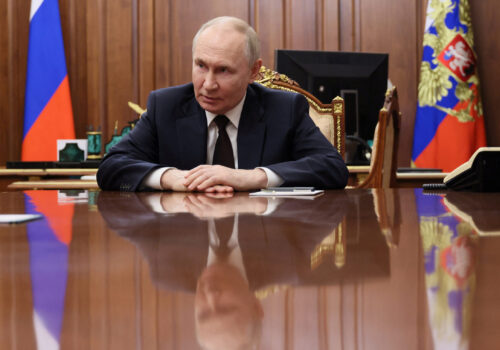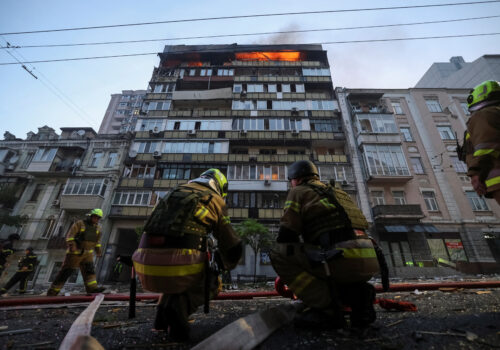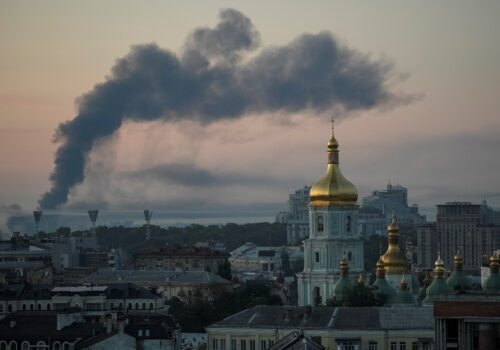The world is currently entering a new multipolar geopolitical era defined by declining Western dominance, growing Chinese influence, and resurgent Russian imperialism. As the United States adapts to these changing realities, the Trump administration is seeking to reduce its commitment to European security while boosting the continent’s ability to defend itself. Ukraine can play a vital role in this process, and is ideally placed to help US President Donald Trump realize his vision of a secure but more self-sufficient Europe.
Many European leaders were initially caught off-guard in early 2025 when new US Vice President JD Vance stated plainly that Europe must take greater responsibility for its own security. Other White House officials have since reiterated this stance, while also underlining the continued US commitment to partnership with America’s NATO allies.
This new US security posture has sparked a major debate across Europe over the need to rearm. However, while the rhetoric in European capitals has changed markedly, there is still no consensus on exactly what this rearmament should involve. At the recent NATO summit, for example, Spain pushed back against the proposal to raise defense spending to 5 percent of GDP, calling it “unreasonable.”
The time for talk may soon be over. Numerous NATO member countries are already warning that Russia could be in a position to attack the alliance within the coming five years. By almost any measure, Europe is not currently ready to face this threat. With clock now ticking, the continent’s leaders must urgently expand defense sector production while also revising outdated defense doctrines.
Stay updated
As the world watches the Russian invasion of Ukraine unfold, UkraineAlert delivers the best Atlantic Council expert insight and analysis on Ukraine twice a week directly to your inbox.
Ukraine is uniquely positioned to help Europe meet the mounting security challenges posed by a revisionist and expansionist Russia. After all, Ukraine has already been defending Europe’s eastern frontier for more than a decade following Russia’s 2014 seizure of Crimea and invasion of the Donbas region. Since February 2022, the country has been the scene of the largest European war since World War II.
The past eleven years of Russian aggression have transformed Ukraine into one of Europe’s leading military powers. Today, the Ukrainian army features around one million battle-hardened men and women, dwarfing the armed forces of its European neighbors. Kyiv’s EU and US partners need to recognize that this unrivaled experience of the twenty-first century battlefield makes Ukraine a key contributor to the future of European security.
Ukraine brings much more to the table than mere numbers. Since the start of Russia’s full-scale invasion, the Ukrainian defense industry has expanded dramatically and is capable of further growth. The country has also emerged as a global innovator in a number of defense tech segments ranging from attack drones to cyber security.
Eurasia Center events

Ukraine currently serves as the ideal testing ground for the American and European weapons systems of tomorrow. Ukraine’s successful deployment of Western defense technologies such as the Patriot air defense system has led to a number of historic breakthroughs that have made significant operational upgrades possible. Growing numbers of cutting edge European and American defense sector companies are already present in Ukraine, developing partnerships and testing their products in combat conditions.
Meanwhile, US security support for Kyiv is keeping the country’s defense contractors busy, creating thousands of jobs and contributing billions of dollars in tax revenues to the United States budget. Similar processes are underway across Europe as the impact of Russia’s full-scale invasion helps to reverse decades of defense industry neglect.
Ukraine’s rapidly evolving drone industry deserves a special mention. Since 2022, Ukrainian drone production has increased dramatically to millions of drones per year. This progress has helped Ukraine counter Russia’s often overwhelming battlefield advantages in terms of firepower and manpower, while also transforming the Battle of the Black Sea in Kyiv’s favor and enabling long-range strikes against targets deep inside Russia.
In June 2025, Ukraine conducted an unprecedented attack involving simultaneous remotely coordinated drone strikes on a number of airbases across Russia. This landmark operation was carried out at a fraction of the cost of traditional missile systems, underlining how Ukraine is shaping the future of drone warfare. Indeed, Ukrainian innovation is now pushing the entire global defense industry to evolve and rethink future plans.
At a time when the rest of Europe is struggling to adjust to a rapidly changing security environment, Ukraine stands out. Over the past decade, Ukrainians have developed the mindset, resilience, and self-confidence to function effectively as a front line democracy in an increasingly insecure world. They know what it means to mobilize society in response to an existential threat, and understand the nature of modern war. These attributes make Ukraine a valuable partner for the United States and key contributor to the future defense of Europe.
Oleksiy Goncharenko is a member of the Ukrainian Parliament with the European Solidarity party.
Further reading
The views expressed in UkraineAlert are solely those of the authors and do not necessarily reflect the views of the Atlantic Council, its staff, or its supporters.

The Eurasia Center’s mission is to enhance transatlantic cooperation in promoting stability, democratic values, and prosperity in Eurasia, from Eastern Europe and Turkey in the West to the Caucasus, Russia, and Central Asia in the East.
Follow us on social media
and support our work
Image: Service members of the 13th Operative Purpose Brigade 'Khartiia' of the National Guard of Ukraine walk in a field to launch a Ukrainian-made Leleka reconnaissance unmanned aerial vehicle a front line, amid Russia's attack on Ukraine, in Kharkiv region, Ukraine. July 20, 2025. (REUTERS/Serhii Korovainyi)





